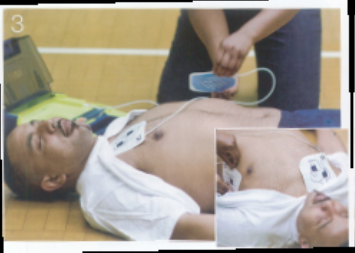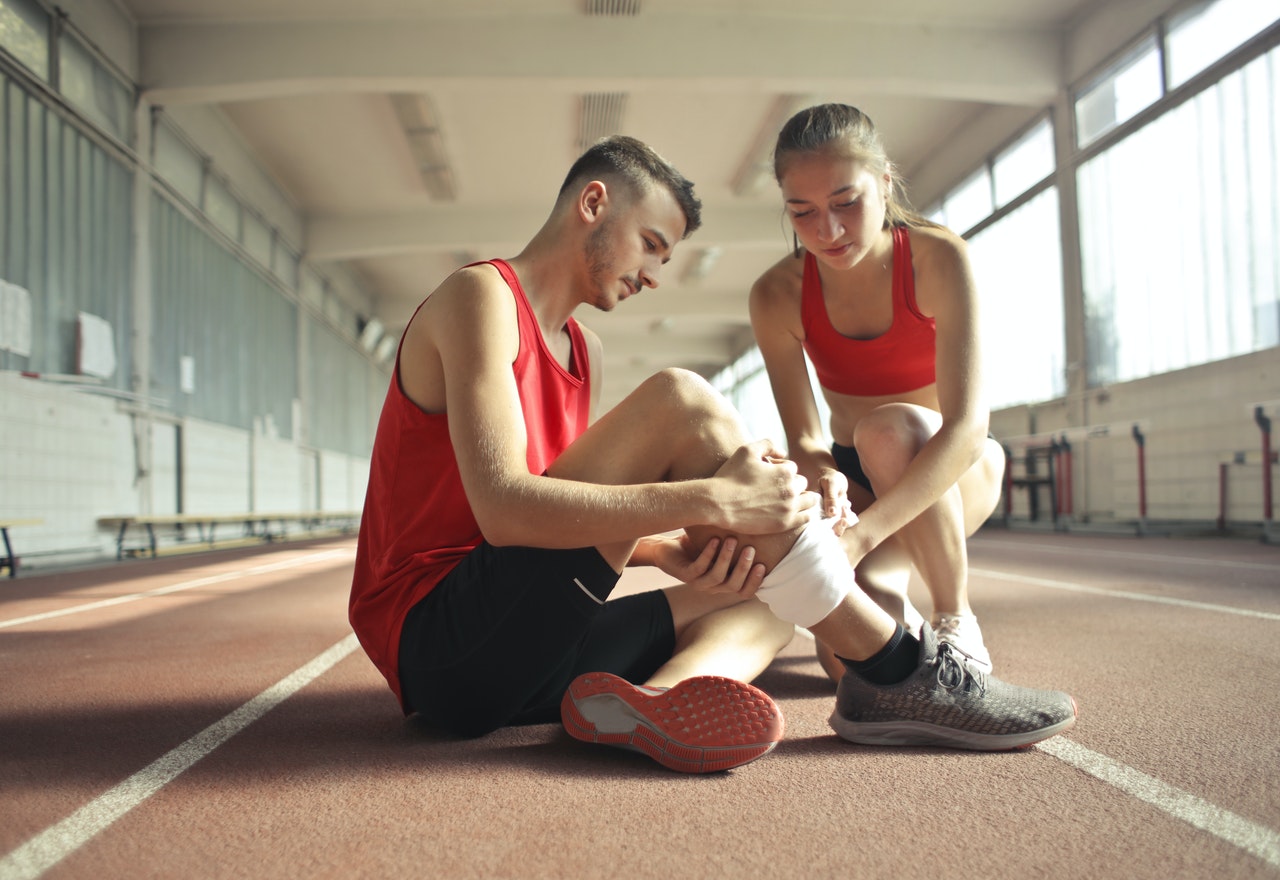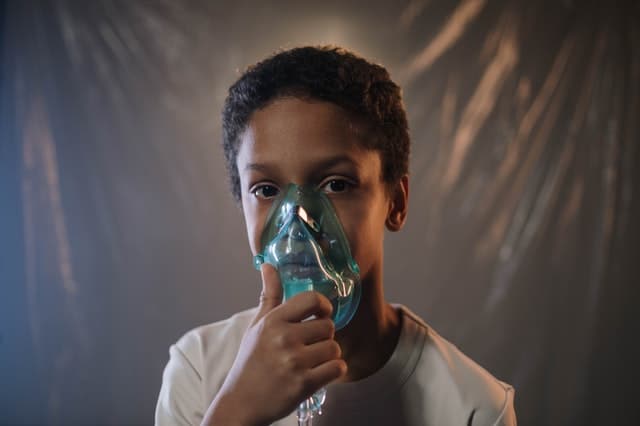How to use an AED, When the heart stops, a cardiac arrest has occurred. The most common cause is an abnormal rhythm of the heart, known as ventricular fibrillation.
This abnormal rhythm can occur when the heart muscle is damaged because of a heart attack or when insufficient oxygen reaches the heart. A machine called an automated external defibrillator [AED] can be used to correct the heart rhythm by one or more electric “shocks··. AEDs are available in many public places, including shopping centers, railway stations, and airports.
The machine analyses the casualty’s heart rhythm and shows with visual prompts – or tells you by voice prompts – what action to take at each stage. You should be trained in its use and be able to carry out CPR.
In most cases when an AED is called for, you will have already started CPR. When the AED is brought, continue with CPR while the machine is prepared, and the pads are attached to the casualty.
CAUTION
- Make sure that no-one is touching the casualty because this will interfere with the AED readings and there is a risk of electric shock.
- Do not turn off the AED or remove the pads at any point, even if the casualty appears to have recovered.
- It does not matter if the AED pads are reversed. If you put them on the wrong way round, do not remove and replace them; it wastes time and the pads may not stick to the chest properly when they are reattached.
POSITIONING THE PADS
- Switch on the AED and I take the pads out of the sealed pack. Remove or cut through clothing and wipe away sweat from the chest.

- Remove the backing paper and attach the pads to the casualty’s chest in the positions indicated. Place the first pad on the casualty’s upper right side, just below his collarbone.
- Place the second pad on the casualty’s left side, just below his armpit (inset]. Make sure the pad has its long axis along the head-to-toe axis of the casualty’s body.
- The AED will start analyzing the heart rhythm. Ensure that no one is touching the casualty. Follow the aural and/or visual prompts given by the machine (opposite].
HOW TO USE AN AED – CONSIDERATIONS WHEN USING AN AED
- Never use an AED on an infant under one year.
The use of an AED is occasionally complicated by underlying medical conditions, external factors, clothing, or the cause of the cardiac arrest. Safety of all concerned should always be your first consideration
CLOTHING AND JEWELLERY
Any clothing or jewelry that could interfere with pads should be removed or cut away. Normal amounts of chest hair are not a problem, but if it prevents good contact between the skin and the pads, it should be shaved off. Ensure any metal is removed from the area where the pads will be attached. Remove clothing containing metal, such as an underwired bra.
EXTERNAL FACTORS
Water or excessive sweat on the chest
can reduce the effectiveness of the shock so the chest should be dry. If a casualty is rescued from water dry the chest before applying the AED pads.
If the casualty is unconscious following an electric shock, start CPR immediately the contact with electricity is broken. The electric current may cause muscle paralysis, which can make rescue breaths and chest compressions more difficult to perform, however, it will not affect the use of the AED.
MEDICAL CONDITIONS
Some casualties with heart conditions have a pacemaker or an implantable cardioverter defibrillator [ICOJ This should not stop you using an AEO. However, if you can see or feel a device under the chest skin, do not place the pad directly over it. If a casualty has a patch such as a glyceryl trinitrate [GTN] patch on the chest, remove it before you apply the AED.
PREGNANT CASUALTIES
There are no contra-indications to using an AEO during pregnancy; however, the increased breast size may present some problems. Therefore, to place the AEO pads correctly, you may need to move one or both breasts. This must be carried out with respect and dignity.
POSITIONING AED PADS ON CHILDREN
Standard adult AEOs can be used on children over the age of eight years. For children between the ages of one and eight, use a pediatric AEO or a standard machine and pediatric pads. If neither is available, then a standard AEO and pads can be used.
POSITIONING PAEDIATRIC AED PADS
Place one pad in the center of the child’s back. Then place the second upper pad over the center of the child’s chest. Make sure both pads are vertical. Connect the pads to the AED and proceed as described.

USING AED PADS ON A LARGER CHILD
Place the pads on the child’s chest as for an adult – one on the child’s upper right side, just below his collarbone, and the second pad on the child’s left side, just below the armpit. Make sure the pad has its long axis along the head-to-toe axis of the child’s body.

HANDING OVER TO THE EMERGENCY SERVICES
When the emergency services arrive continue to resuscitate the child until they take over from you. They need to know:
• Casualty’s present status; for example, unconscious and not breathing.
• Number of shocks; you have delivered.
• When the casualty collapsed, and the length of time he has been unconscious.
Any relevant history; if known. If the casualty recovers at any point, leave the AEO pads attached to his chest. Ensure that any used materials from the AED cabinet are disposed of as clinical waste, Inform the relevant person what has been taken out of the cabinet since it will need to be replaced.
Hope this will be helpful information to you. thank you for reading us.

